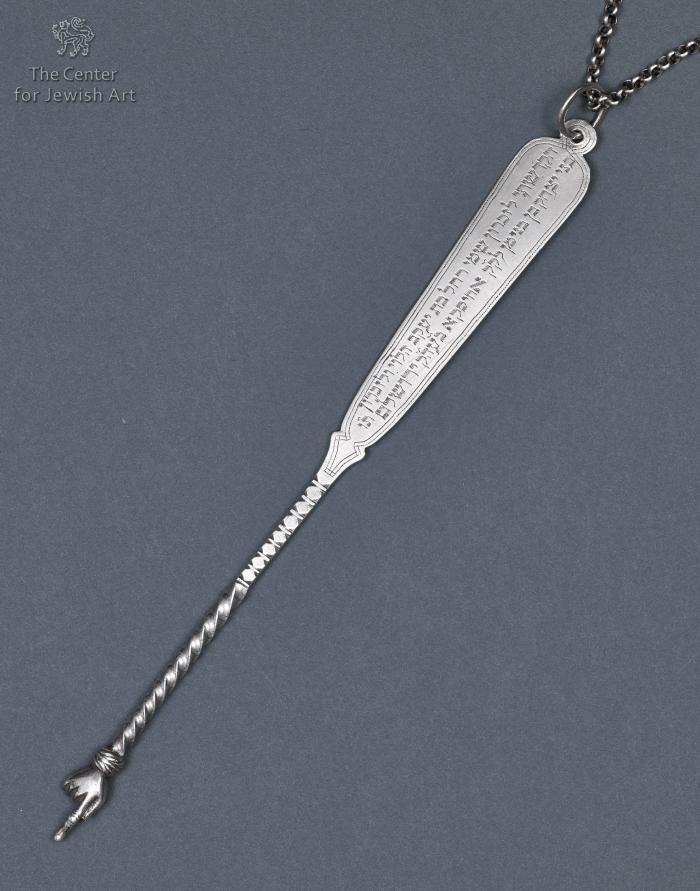Obj. ID: 37361 Torah pointer, Jerusalem, circa 1925

sub-set tree:
The following description was prepared by William Gross:
The pointer used by the Torah reader to keep the place is known in European communities as the *yad, "hand," or the etẓba, "finger," and in Sephardi and Eastern communities as the moreh, "pointer," or kulmus, "quill," the former because of its function and the latter because of its shape. Halakhic sources also use the terms moreh or kulmus. The pointer was originally a narrow rod, tapered at the pointing end, usually with a hole at the other end through which a ring or chain could be passed to hang the pointer on the Torah scroll. An additional reason for using the pointer was to prevent the oily finger from touching the parchment and inked letter, something that would eventually cause severe deterioration.
The original form of the pointer was preserved in Eastern communities, the differences from one community to another being mainly in length and ornamentation. In certain communities, a hand with a pointing finger was added, and accordingly, the pointer came to be known as a yad, "hand," or eẓba, "finger." Pointers are made for the most part of silver or silver-plated brass, but in a few European communities, they used to be made of wood. In such cases, the pointers were carved in the local folk-art style.
In Jerusalem, there were and are hundreds of small synagogues formed by people who came to Jerusalem from a particular city or town. So it was for Jews from Georgia, who began to make Aliyah to Israel already in the 1860s. By 1920 there were already 1,700 Georgian Jews in Eretz Israel and this Yad was from one of their congregations in Jerusalem, the Holy Congregation of "Achiska", which is probably from the city of Alkhachiske in Georgia. The general form of the Yad is Tunisian, but that is true of most of the early Yads from Jerusalem, even if the kehillah is Georgian. This has apparently been donated by a mother in memory of her son.
Inscription: I have dedicated (this) for the memory of my name Rachel the daughter of Ya’akov Halevi and the memory of my son Yitzhak Binyamin for the Holy Congregation Achiska in the holy city of Jerusalem, may it be built and established.



